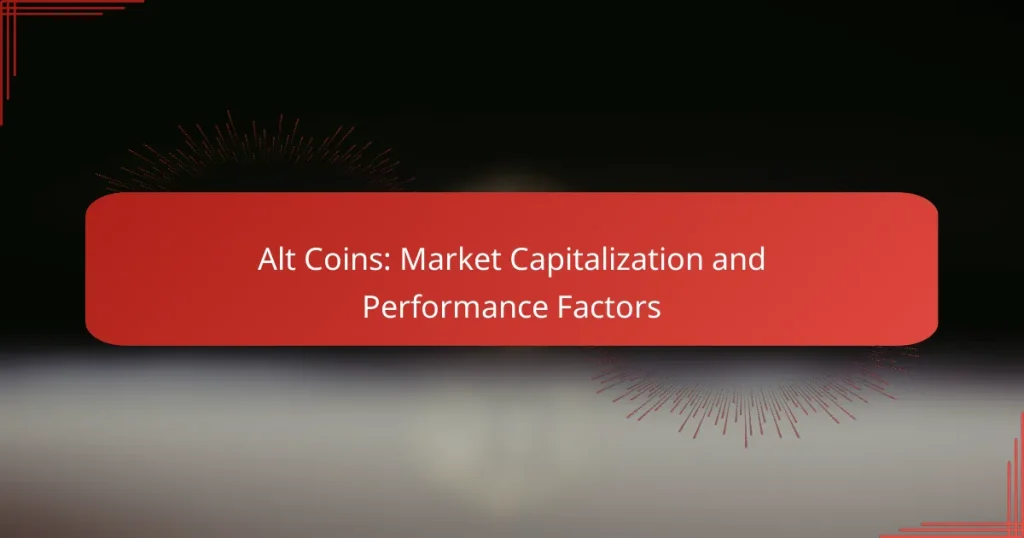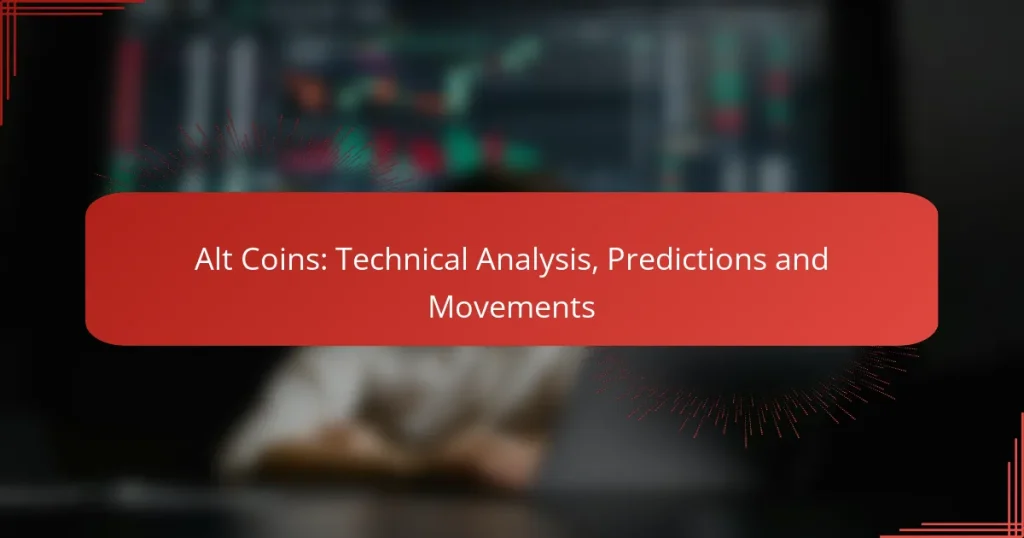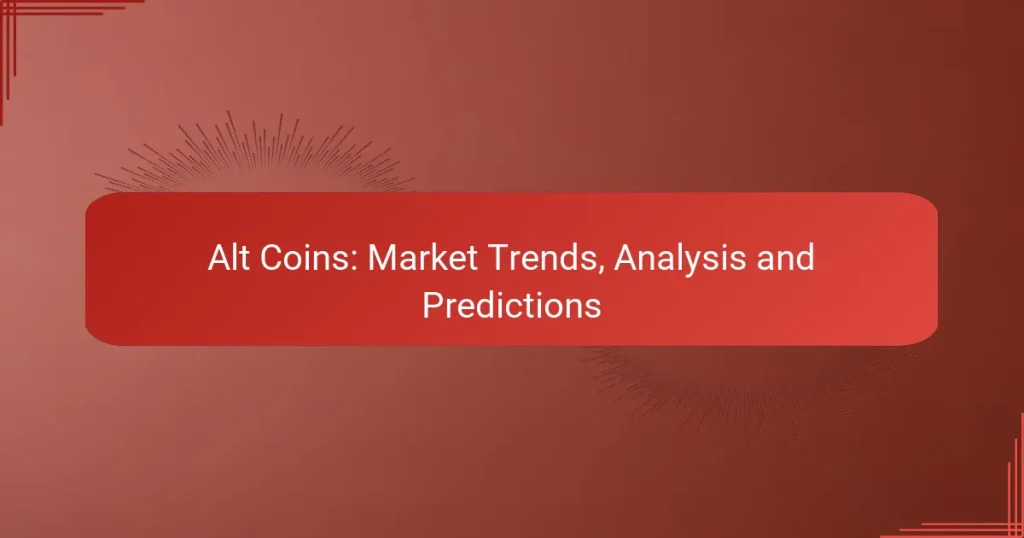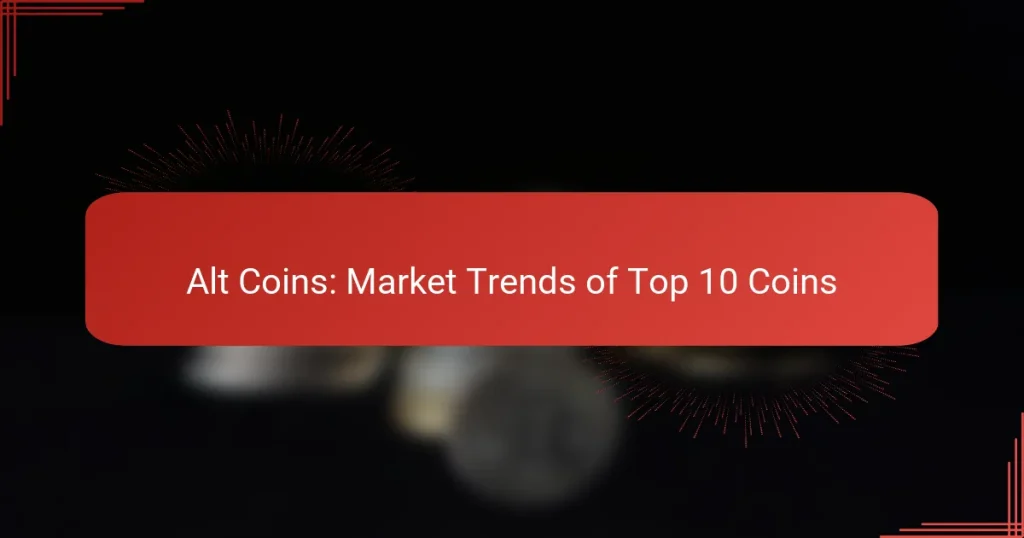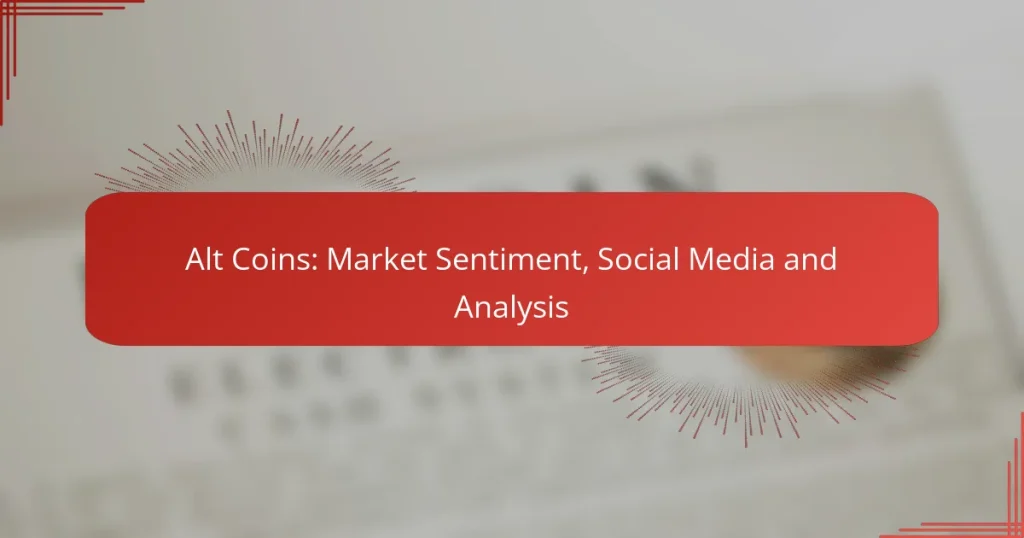The current landscape of cryptocurrency altcoins is marked by notable trends, including a surge in institutional investment and the growth of decentralized finance (DeFi) and non-fungible tokens (NFTs). As regulatory changes and market volatility continue to influence investor behavior, altcoins are carving out their own niches, distinct from Bitcoin. In 2023, leading altcoins like Ethereum, Cardano, Solana, and Polkadot are showcasing remarkable growth and innovation, attracting attention from both investors and developers.
Alt Coins: Market Capitalization and Performance Factors
Alt Coins: Technical Analysis, Predictions and Movements
Alt Coins: Market Trends, Analysis and Predictions
Alt Coins: Emerging Trends and Opportunities in Asia
Alt Coins: Market Trends of Top 10 Coins
Alt Coins: Market Sentiment, Social Media and Analysis
What are the current market trends in cryptocurrency altcoins?
The current market trends in cryptocurrency altcoins show a significant shift towards increased institutional investment, the expansion of decentralized finance (DeFi), and the rise of non-fungible tokens (NFTs). Additionally, regulatory developments and market volatility are shaping the landscape, influencing investor behavior and market dynamics.
Increased institutional investment
Institutional investment in altcoins has surged, with large financial entities allocating substantial capital to diversify their portfolios. This trend is driven by the growing acceptance of cryptocurrencies as legitimate assets, leading to increased liquidity and stability in the market.
Examples include hedge funds and investment firms actively purchasing altcoins, which can lead to price appreciation and greater market confidence. Institutions often favor established altcoins like Ethereum and Litecoin, but there is also interest in promising new projects.
Growing DeFi ecosystem
The decentralized finance (DeFi) ecosystem is rapidly expanding, offering innovative financial services without traditional intermediaries. This growth is attracting both retail and institutional investors looking for yield-generating opportunities through lending, borrowing, and liquidity provision.
Popular DeFi platforms like Uniswap and Aave allow users to trade and lend altcoins, often providing higher returns than traditional savings accounts. However, investors should be cautious of smart contract risks and the volatility associated with DeFi tokens.
Emergence of NFTs
Non-fungible tokens (NFTs) have emerged as a significant trend within the altcoin market, representing unique digital assets that can be bought, sold, and traded. The popularity of NFTs spans art, music, gaming, and virtual real estate, attracting diverse audiences and investors.
Platforms like OpenSea and Rarible facilitate NFT transactions, allowing creators to monetize their work. Investors should consider the speculative nature of NFTs and the importance of provenance and rarity when evaluating potential purchases.
Regulatory developments
Regulatory developments are increasingly influencing the altcoin market, with governments worldwide implementing frameworks to govern cryptocurrency activities. These regulations aim to enhance consumer protection and prevent fraud while fostering innovation in the sector.
For instance, the European Union is working on comprehensive regulations that could impact how altcoins are traded and taxed. Investors should stay informed about local regulations, as compliance can affect market accessibility and investment strategies.
Market volatility analysis
Market volatility remains a defining characteristic of altcoins, often experiencing significant price fluctuations within short periods. This volatility can present both risks and opportunities for traders and investors looking to capitalize on price movements.
To navigate this volatility, investors should employ risk management strategies, such as setting stop-loss orders and diversifying their portfolios. Understanding market sentiment and technical analysis can also aid in making informed trading decisions during turbulent times.
How do altcoins compare to Bitcoin?
Altcoins, or alternative cryptocurrencies, differ from Bitcoin in several key aspects, including market capitalization, use cases, and price volatility. While Bitcoin remains the dominant player in the cryptocurrency market, altcoins offer a variety of features and applications that can appeal to different investors and users.
Market capitalization differences
Bitcoin consistently holds the largest market capitalization among cryptocurrencies, often accounting for a significant percentage of the total market. In contrast, altcoins typically have lower market caps, which can range from millions to billions of dollars, depending on the coin’s popularity and adoption.
This disparity in market capitalization can influence liquidity and investment risk. Altcoins with smaller market caps may experience more significant price swings and can be more susceptible to market manipulation compared to Bitcoin.
Use case variations
Altcoins often serve specific purposes or niches that Bitcoin does not address. For example, Ethereum enables smart contracts and decentralized applications, while Ripple focuses on facilitating cross-border payments. These varied use cases can attract different types of investors and users.
When considering altcoins, it’s essential to evaluate their unique features and potential for real-world applications. Some altcoins may have innovative technology or partnerships that enhance their value proposition, while others might lack a clear use case.
Price volatility comparison
Price volatility is a critical factor when comparing altcoins to Bitcoin. Generally, Bitcoin exhibits lower volatility due to its established market presence and larger trading volume. In contrast, many altcoins can experience extreme price fluctuations, sometimes exceeding 10% in a single day.
Investors should be cautious with altcoins, as their price movements can be unpredictable. It’s advisable to conduct thorough research and consider diversifying investments to mitigate risks associated with high volatility in the altcoin market.
What are the top-performing altcoins in 2023?
In 2023, several altcoins have emerged as top performers, showcasing significant growth and innovation. Ethereum, Cardano, Solana, and Polkadot are leading the charge, each offering unique features and advantages that appeal to investors and developers alike.
Ethereum (ETH)
Ethereum remains the most prominent altcoin, primarily due to its smart contract functionality and robust ecosystem. It has transitioned to a proof-of-stake model, which enhances energy efficiency and scalability, making it a preferred choice for decentralized applications (dApps).
Investors should consider Ethereum’s ongoing upgrades, such as the Ethereum 2.0 rollout, which aims to improve transaction speeds and reduce fees. However, competition from other platforms could impact its market share, so staying informed about developments is crucial.
Cardano (ADA)
Cardano is recognized for its research-driven approach and strong emphasis on security and sustainability. Its unique proof-of-stake consensus mechanism allows for efficient transactions while maintaining a low environmental impact.
With a focus on smart contracts and decentralized finance (DeFi), Cardano is gaining traction among developers. Investors should watch for upcoming upgrades that enhance functionality, as well as partnerships that could expand its use cases in various sectors.
Solana (SOL)
Solana has gained popularity due to its high throughput and low transaction costs, making it an attractive option for developers and users alike. Its ability to handle thousands of transactions per second positions it as a strong competitor in the DeFi and NFT spaces.
However, potential investors should be aware of network stability issues that have arisen in the past. Keeping an eye on Solana’s ongoing improvements and community support can provide insights into its long-term viability.
Polkadot (DOT)
Polkadot stands out for its unique multi-chain architecture, allowing different blockchains to interoperate seamlessly. This feature enhances scalability and flexibility, making it a compelling choice for projects that require cross-chain functionality.
Investors should consider Polkadot’s growing ecosystem of parachains and the potential for innovative applications. Monitoring developments in governance and partnerships will be essential for understanding its future trajectory in the altcoin market.
What factors influence altcoin prices?
Altcoin prices are influenced by a variety of factors, including market sentiment, technological advancements, and regulatory news. Understanding these elements can help investors make informed decisions in the volatile cryptocurrency market.
Market sentiment
Market sentiment refers to the overall attitude of investors toward a particular altcoin or the cryptocurrency market as a whole. Positive news, such as successful project launches or partnerships, can drive prices up, while negative news, like security breaches or market crashes, can lead to sharp declines.
Investors often gauge market sentiment through social media trends, news articles, and community discussions. Tools like sentiment analysis platforms can provide insights into how the market feels about specific altcoins, allowing traders to react accordingly.
Technological advancements
Technological advancements play a crucial role in determining the value of altcoins. Innovations such as improved scalability, enhanced security features, or unique use cases can attract investor interest and increase demand, leading to price appreciation.
For example, an altcoin that implements a groundbreaking consensus mechanism or integrates with popular decentralized applications may see a surge in its price. Keeping an eye on technological developments and updates from project teams can provide valuable insights for potential investors.
Regulatory news
Regulatory news significantly impacts altcoin prices, as government policies can either encourage or hinder market growth. Announcements regarding regulations, such as taxation or trading restrictions, can lead to immediate price fluctuations.
For instance, a country that embraces cryptocurrency with favorable regulations may see its local altcoins thrive, while stringent regulations can stifle innovation and investor confidence. Staying informed about regulatory changes in key markets is essential for anyone involved in altcoin trading.
How to evaluate altcoin investment opportunities?
To evaluate altcoin investment opportunities, consider factors such as market capitalization, the credibility of the project team, and community engagement. These elements can provide insights into the potential risks and rewards associated with investing in a specific altcoin.
Market cap analysis
Market capitalization, or market cap, is a critical metric for assessing the size and stability of an altcoin. It is calculated by multiplying the current price of the coin by its total circulating supply. Generally, altcoins with higher market caps are considered less volatile and more established than those with lower caps.
When analyzing market cap, look for coins in the mid to high market cap range, typically starting from several million USD. This can indicate a more robust market presence and investor confidence. However, be cautious of coins with rapidly fluctuating prices, as they may signal instability.
Project team credibility
The credibility of the project team behind an altcoin plays a significant role in its potential success. Research the backgrounds of the team members, their experience in the cryptocurrency space, and any previous projects they have worked on. A strong team with a proven track record can enhance trust and reliability.
Check for transparency in the team’s communication and whether they have a clear roadmap for the project. Engaging with the community through regular updates and addressing concerns can also indicate a committed and credible team.
Community engagement
Community engagement is essential for the long-term viability of an altcoin. A strong, active community can drive adoption and support for the project. Look for altcoins with vibrant online communities on platforms like Reddit, Telegram, and Discord, where discussions about the project are frequent and constructive.
Evaluate the sentiment within the community as well. Positive engagement, such as collaborative initiatives or feedback from users, can indicate a healthy ecosystem. Conversely, a lack of community interaction or negative sentiment may raise red flags about the project’s future prospects.

